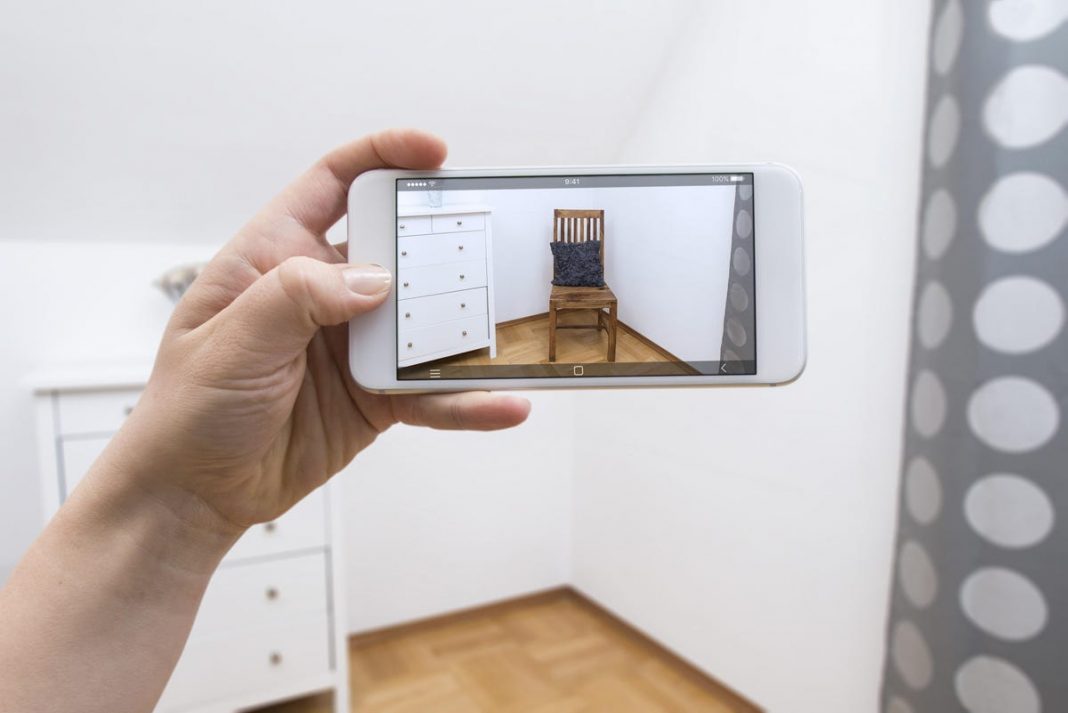Woman holding a mobile phone using an augmented reality application to see a new chair for the empty … [+]
getty
Experiential e-commerce is yet another emerging form of virtual sales, focused on consumer relationships, branding efforts, and interactive experiences. With social media growing more powerful by the day, companies are looking for ways to make e-commerce an experience, as opposed to just an online store. The pandemic has further accelerated experiential e-commerce whereas brands are now focused on new and creative ways to engage their customers online. Complex Media, for example, historically has had their signature offline event ComplexCon for close to a decade, and this past year they created a highly digital virtual online event called ComplexLand, as they looked to mimic some of the offline components and create a highly engaging digital experience (in the midst of the global pandemic).
Here are three trends that show us just how popular experiential e-commerce will be and how it will continue to evolve and influence the way brands interact with their customers.
Influencer Engagement
Whether brands work with micro influencers at much more affordable rates or the most popular influencers for a steep price, there is no doubt that influencer marketing works simply because influencers are influential.
For example, Jimmy Donaldson, aka Mr. Beast on YouTube, is known for giving away thousands to his fans and followers – mastering experiential e-commerce. Simply, he makes money from creating interactive experiences for his fans, constantly strengthening the bond between them and him. Known for incredible giveaways (once offering a house to a pizza guy), the interactivity is clear: if you watch me, you could win. If you follow me, you could win. If you see me, you could win. And who wouldn’t exchange a follow or comment for a chance at free money (or a house)?
Proving just how valuable your follower count is and how experiential interaction drives results
Augmented Reality Recreating The Store Shopping Experience
You’ve heard of online shopping, but have you heard of augmented reality (AR) shopping? Indeed, online shopping may go full circle with physical shopping if AR has anything to say about it.
Augmented reality providers hope to make shopping a truly interactive experience, with consumers soon having the option to do things like virtually ‘try-on’ shoes, shirts, pants, or even virtually see couches they’re considering dropped right into their living room via an app. Some retailers are looking to offer 3D mannequins with a constantly rotating display (depending on the profile of the consumer watching it). Soon gone are the days of mall employees undertaking the cumbersome task of physically switching out outfits once a week (and aren’t they thankful for that). Augmented reality as a useful application, can recreate the fun and engaging in-person consumer experience that shoppers used to enjoy when brick-and-mortar shops were the only option – long before the times of online shopping.
Selling Merch In-Gam
Video games are bigger and more expansive than ever, and with that, the opportunity for revenue is at an all-time high. Grand Theft Auto Online, a technically free experience after the initial game purchase, expects a 75% microtransaction jump in 2021, with revenues reaching 313 million in just one-quarter last year. Obviously, video games are a perfect breeding ground to offer items within the experience of a game. Online retail giant Shopify boasts the API Unity SDK, a service that offers games or apps the ability to offer physical products in their virtual world. Users can shop at in-game gift shops, receive products as a reward for their in-game play, or even allow players to create unique items in-game that they can own physically, as explained by Shopify
Experiential e-commerce is the logical next-step in online sales. People are simply more likely to click that buy-button if they feel they’re getting something back out of it, whether it’s leveling up in a game, entering a contest, or being able to see the furniture they’re considering purchasing in their very living room before the moving company ever arrives. Amazon has been doing this for years – leveraging the AR feature of the app. The above trends offer a glimpse into the ways companies will get consumers to dip into their pockets in 2021 and beyond. We can expect a lot more virtual and augmented reality, organic and native branded engagement, and a world where branding and lifestyle become one harmonious space.




